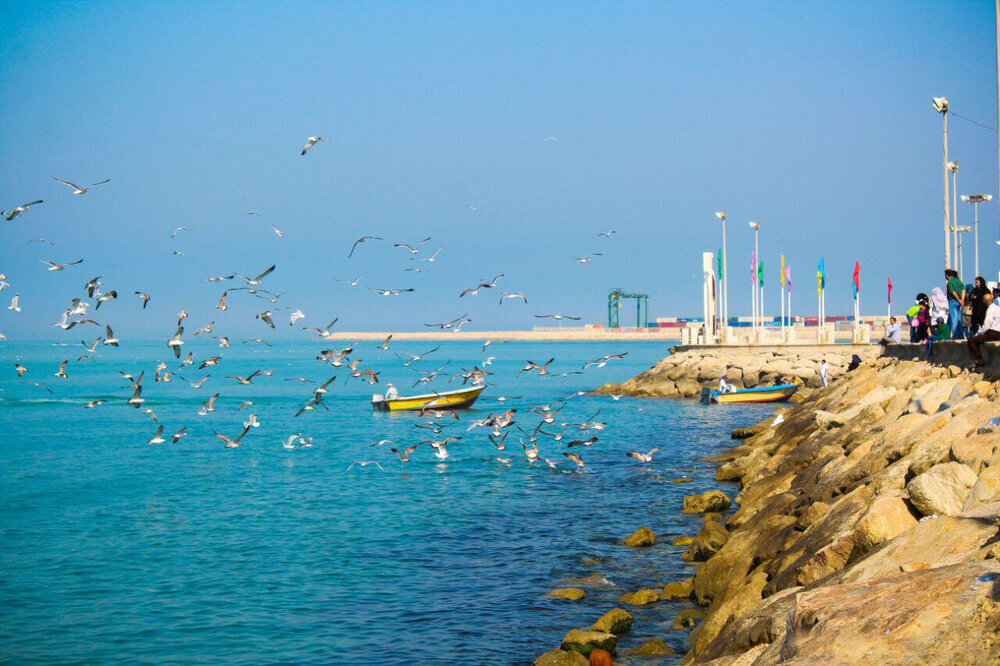Persian Gulf ecosystem at risk

TEHRAN – The Persian Gulf is a valuable water body in terms of ecosystem and biodiversity but has been endangered severely due to different factors.
Acidification, reduction of oxygen, increase in temperature, and, most importantly, pollution of the aquatic environment, are among the challenges of the Persian Gulf, which have caused significant damage to this watershed and its inhabitants.
The Persian Gulf has an area of about 241,000 square kilometers. Its length is some 990 km, and its width varies from a maximum of about 340 km to a minimum of 55 km in the Strait of Hormuz.
It has its own environmental characteristics, as it is a semi-closed sea, aging 15,000 years, with an average depth of 35 meters, while being highly salty with severe heat fluctuations, and an annual evaporation rate of 140 cm.
There are 2 species of dolphin and whale in the area, in addition to 1,100 species of fish and 5 species of turtle, the Persian Gulf also hosts the second largest population of manatees, 232 seaweed species, and 4 million migratory birds annually, but today 240 important species and many habitats are under threat.
The enclosed water basin shares boundaries with Iran, Oman, Iraq, Kuwait, Saudi Arabia, Bahrain, Qatar, and the United Arab Emirates. The Strait of Hormuz connects the Persian Gulf to the Sea of Oman.
There are tens of international conventions and protocols to protect the Persian Gulf marine environment, however, despite the fact that the Persian Gulf is of utmost importance economically, environmentally, and socially for the littoral cities, there is no collective effort to safeguard its marine life.
Some 60 percent of the world's oil reserves are in the Persian Gulf, and by building oil platforms and complexes, and refineries around it, we have provided the ground for the entry of oil, chemicals, and sewage into the water.
More than 10,000 ships pass through the Persian Gulf and the Sea of Oman annually, 75 percent of which are related to the transportation of crude oil and petroleum products.
The discharge of various waste materials such as engine washing water, sewage, and ship balance water has exacerbated the pollution in the Persian Gulf.
Carbon footprint is another damage done to aquatic environments, so the more carbon the water absorbs, the more acidic it becomes.
The results of an 8-year study show that changes in the pH of the aquatic environment lead to complex changes in the food chain and cause damage to aquatic animals whose exoskeleton is made of carbonates, such as starfish, oysters, and butterflyfish, and result in the instability of the shells of these organisms.
Asghar Bohlouli, a faculty member of the Institute of Geophysics, University of Tehran, refers to the acidification of these two watersheds as another environmental challenge of this region.
Hassan Mohammadi, the coordinator of the Regional Organization for the Protection of Marine Environment (ROPME), said in December 2019 that studies show that as the current environmental issues continue, by the end of the century, about 20 percent of native species in the Persian Gulf will be extinct and 10 percent of new species that might be invasive will replace them.
As a result of the increase of greenhouse gases, the acidification of water is happening all over the earth. Studies show that every 10 years the pH of the seas decreases by about 0.3 percent.
Unfortunately, this rate in the Persian Gulf is higher than usual and is reported to be around 0.7 percent in 10 years, which is twice the average rate of acidification in other regions of the world.
One of the most important effects of acidification is the destruction of coral habitats and crustaceans and sea shells that have calcium carbonate shells.
Hypoxia is one of the other dangers that the Persian Gulf is facing. Experts believe that the warming of the earth and the increase in the entry of sewage and chemical fertilizers containing inorganic phosphorus and nitrogen are the main factors that aggravate the phenomenon of oxygen depletion in marine environments, these factors have caused a significant volume and area of the world's marine environments to become dead zones.
According to studies, the water column in the Sea of Oman from the mouth of the Strait of Hormuz to the deep waters in front of Chabahar at a depth of more than 50 meters is facing a severe lack of oxygen.
If the concentration of dissolved oxygen in water decreases to values less than 2 mg/liter (about 60 micromol/kg), the condition of oxygen deficiency occurs.
This phenomenon occurs naturally in depths of 200 to 1000 meters in some ocean areas and also in other environments.
A beach polluted with sewage and agricultural fertilizers is created by the bacterial decomposition of organic materials and the remains of the corpses of living organisms and oxygen consumption.
In recent years, the increase in water temperature in the Persian Gulf, along with the tensions caused by unstable development activities in the important water area, both on the north coast and especially on the part of the southern neighbors who have less adherence to the principles of environmental protection, have caused significant damages to the corals of the Persian Gulf.
April 30 is the national day of the Persian Gulf. We should think about the precious ecosystem of this watershed from now on so that we can protect the residents of this watershed from future dangers.
